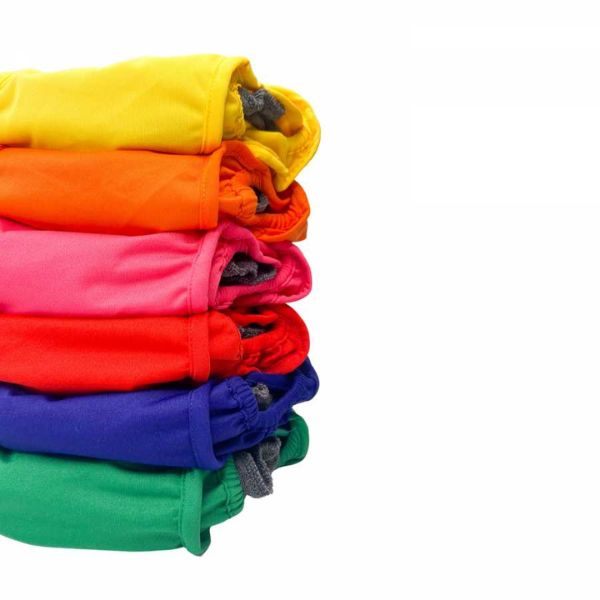Is Babywearing Good For Babies?
The art of Babywearing has been around for centuries, and is simply the practice of carrying (or wearing) your baby in a baby carrier, sling or pouch.
Every culture in the world has been known to adopt this instinctive parenting approach, and in fact baby carriers have played an important role in the progress of the human species.
Where traditional families have relied upon the mother for day-to-day functioning, this simple invention allowed her to carry out regular chores such as cooking, harvesting and cleaning, while their young baby was safe and in close proximity at all times.
In western society today, baby carriers retain a valuable role in early years parenting, and provide a host of benefits to both caregiver and child. Let's explore those in more detail...
What are the benefits of babywearing?
The main benefits of babywearing are:
- Caregiver bonding
- Social & cognitive development
- Hands free
- Physiological support
- Higher rates of breastfeeding
- Physical development
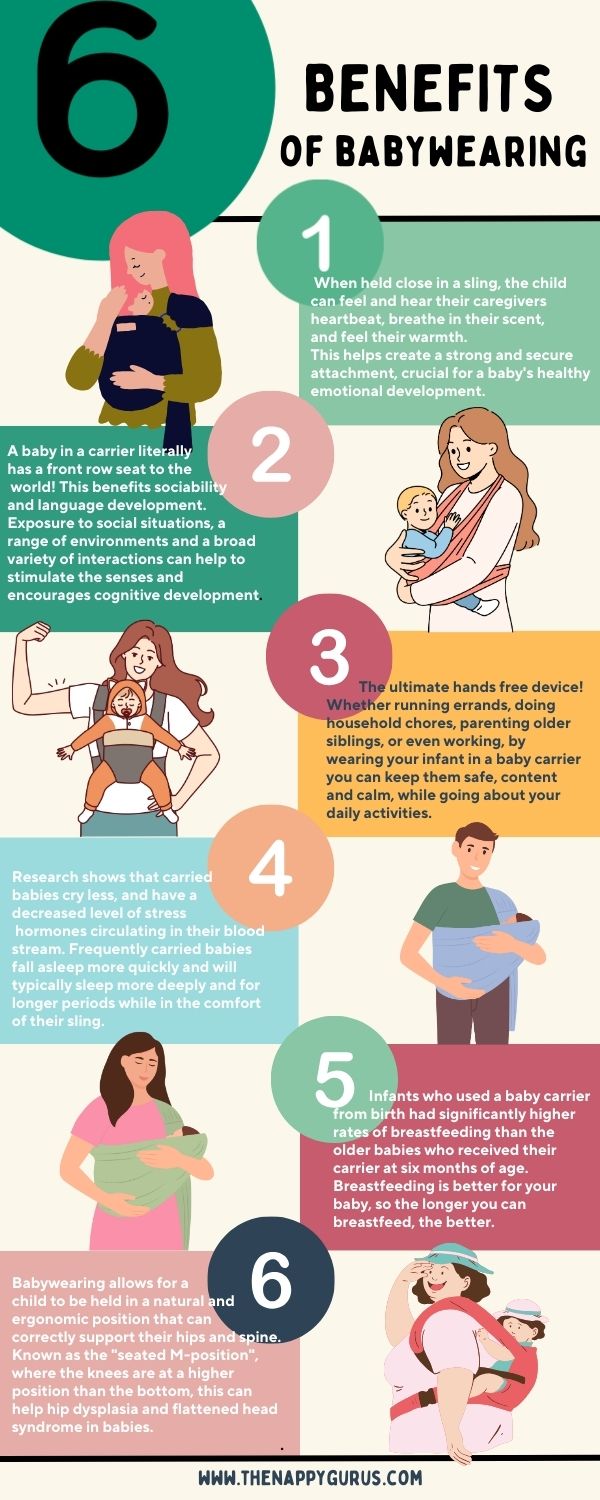
Caregiver bonding
Holding an infant close to your body can create a sense of attachment and connection unrivalled by any other method. When held close in a baby carrier, the child can feel and hear their caregivers heartbeat, breathe in their scent, and feel their warmth.
Babywearing can promote the bonding process between caregiver and baby, helping to create a strong and secure attachment which is crucial for a baby's healthy emotional development.
Social & Cognitive Development
When a child is worn in a baby carrier, they literally have a front row seat to the world around them! It it believed that this higher vantage point provides benefits in areas such as sociability and language development.
Exposure to social situations, a range of environments and a broad variety of interactions can help to stimulate the senses and encourages cognitive development.
Hands-free
Life is busy.
"I remember that my eldest daughter was super colicky and just didn't want to be set down. I had just launched my business and her brothers were 4 and 16 months respectively. It was manic! Using a sling for her was an absolute godsend and massively lessened my Mummy guilt as I knew she was happy and content but I could get on!
When my second daughter arrived it made sense to use a carrier from the start. At six weeks old, I even took her to an exhibition for the weekend where we had a stand - people thought she was a sling demonstration dolly! But using slings and carriers allowed me to do what I needed to know, knowing my baby was safe and close to me." Helen, founder of Cheekywipes.
Make things a little easier for yourself by freeing up your hands, for the ultimate multi-tasking! Whether running errands, doing household chores, parenting older siblings, or even working, by wearing your infant in a baby carrier you can keep them safe, content and calm, while going about your daily activities. Of course, care should always been taken and judgement calls made depending on the tasks you're undertaking- for example, if cooking, moving your baby from a front carry position to a back one is a safer option to reduce the risk of injury. Choose a carrier such as the Ergobaby carrier, which can be safely worn for multiple carry positions.
Physiological support
You may be familiar with the term "kangaroo care"? This term was coined in reference to premature babies and the research that shows that holding an preemie baby to bare skin for as long as possible during the day actually results in faster weight gain. This principle can be actually be applied to all infants, as evidence shows that this practice helps to promote the regulation of heart rate, respiratory rates, and temperature.
Research shows that carried babies cry less, and have a decreased level of stress hormones circulating in their blood stream. Frequently carried babies fall asleep more quickly and will typically sleep more deeply and for longer periods while in the comfort of their sling.
Higher rates of breastfeeding
The authors of this study showed that infants who used a baby carrier from birth had significantly higher rates of breastfeeding than the older babies who received their carrier at six months of age.
Breastfeeding is recommended as being better for your baby and these higher rates are closer to the recommendations for longer duration of breastfeeding recommended by the American Academy of Pediatrics.
Physical development
Babywearing allows for a child to be held in a natural and ergonomic body position, that can correctly support their hips and spine.
Known as the "seated M-position", where the knees are at a higher position than the bottom, ensures that weight is spread correctly and the spine in adequately supported.
Good, correctly designed slings such as the Tula Baby Carrier encourage this spread-squat M-position and can help to prevent hip problems later in life, in children at risk of them. Learn more about how reusable nappies can further provide hip dysplasia support.
Baby Carriers are further recommended by the NHS to help prevent Plagiocephaly (the flattening of portions of the skull bones from prolonged periods of lying on the back).
A baby that is worn in an upright position or carried in a variety of positions during waking hours is naturally at a lower risk of suffering this condition as they spend less time on their backs.
How to carry your baby safely
The TICKS Rule for safe babywearing is a set of guidelines developed to promote safe babywearing or carrying your baby in a sling. It helps avoid sling fabric pressing against the baby's nose and mouth especially.
It was created by the UK Sling Consortium, a group dedicated to ensuring that babywearing is carried out safely and effectively.
TICKS stands for Tight, In view at all times, Close enough to kiss, Keep chin off the chest, and Supported back. It's a really easy way to help you check that your baby is being carried in a way that supports their developing body correctly and being kept safe and secure.
TIGHT
Your baby carrier should be tight enough to hug your baby close to you as this will be most comfortable for you both. Any slack/loose fabric will allow your baby to slump down in the carrier which can hinder their breathing and pull on your upper body and back.
IN VIEW AT ALL TIMES
You should always be able to see your baby's face by simple glancing down. The fabric of the sling or carrier should not close around them so you have to open it to check on them. In a cradle position your baby should face upwards and not be turned in towards your body.
CLOSE ENOUGH TO KISS
Your baby's head should be as close to your chin as it comfortable. By tipping your head forward you should be able to kiss your baby on the head or forehead.
KEEP CHIN OFF THE CHEST
A baby should never be curled so their chin is forced onto their chest as this can restrict their breathing. Ensure there is always a space of at least a finger width under your baby's chin.
SUPPORTED BACK
In an upright carrier a baby should be held comfortably close to the wearer so their back is supported in its natural position and their tummy and chest are against you. If a soft structured carrier is too loose they can slump which can partially close their airway.
A baby in a cradle carry in a pouch or ring sling should be positioned carefully with their bottom in the deepest part so the sling does not fold them in half pressing their child to their chest.
Baby wearing is a practical and comfortable way to care for an infant, and can help to promote a strong and secure bond attachment It has many benefits for both child and caregiver, and if you're keen to try it for yourself, take a look at our range of baby carriers. We only stock tried and tested baby carriers that we know and love.
If you enjoyed this article, you may also enjoy these:
- Everything you need to know about reusable swim nappies
- Do reusable nappies really save money?
- How to host an eco friendly baby shower
- Sleepy Songs: Best playlists for babies
About the Author: Laura Davies is the founder of The Nappy Gurus, the online store dedicated to providing families with a one stop shop for parenting products with sustainability and nurturing in mind. Laura has personal experience with reusable nappies, reusable wipes and babywearing, and is a trained Babywearing Peer Supporter.
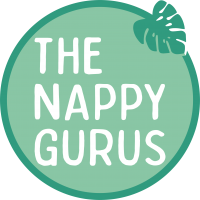
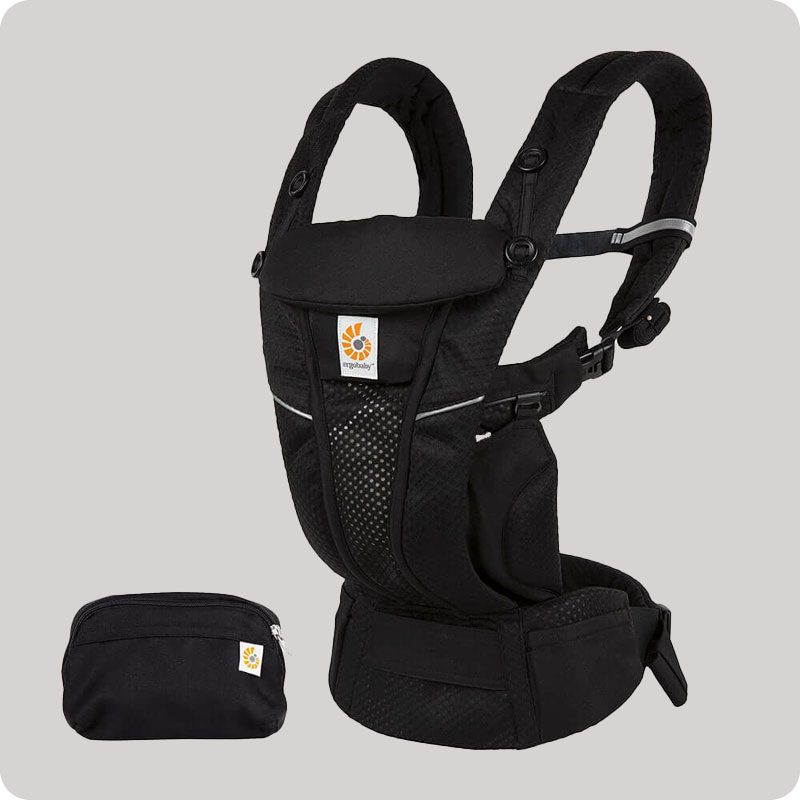
.jpg)
.jpg)
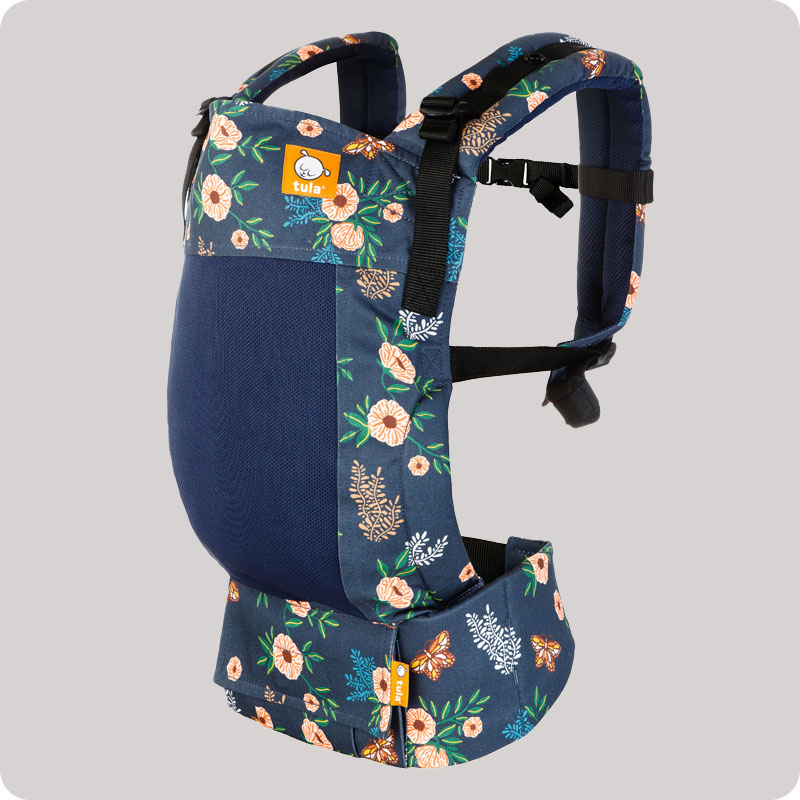
.jpg)
.jpg)
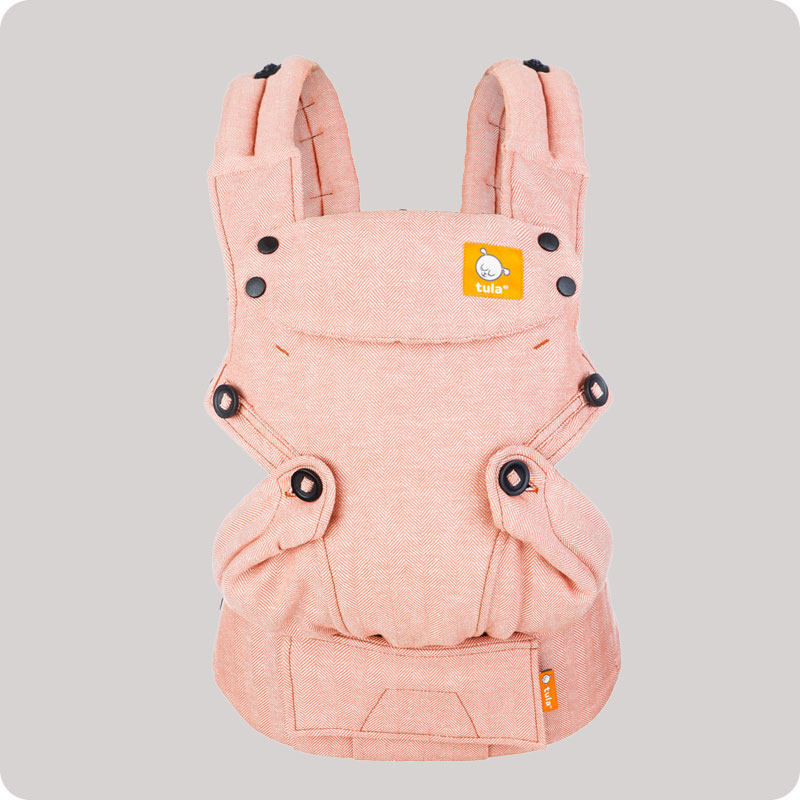
.jpg)
.jpg)
.jpg)
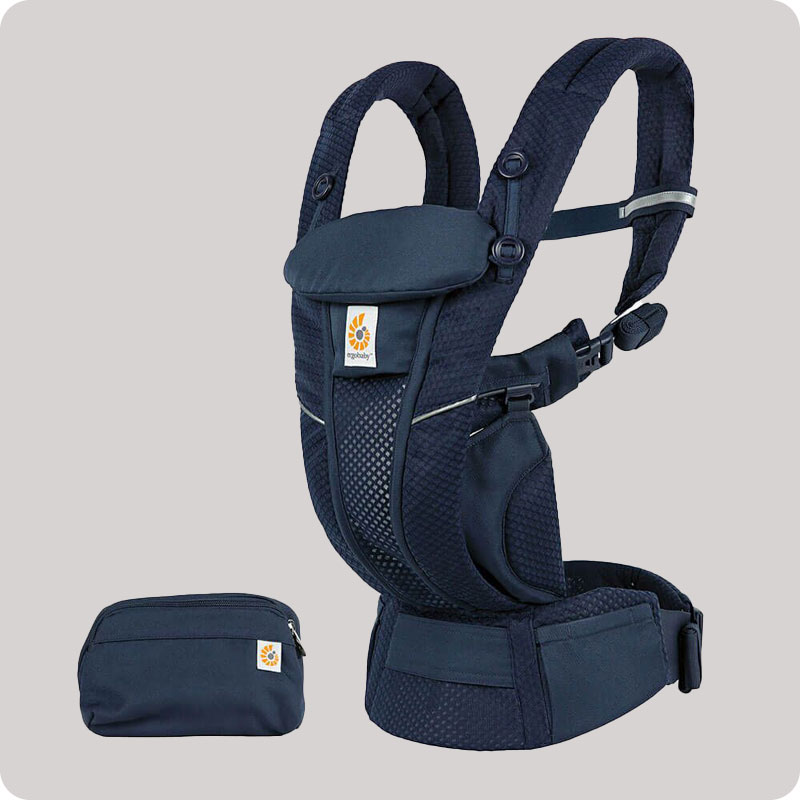
.jpg)
.jpg)
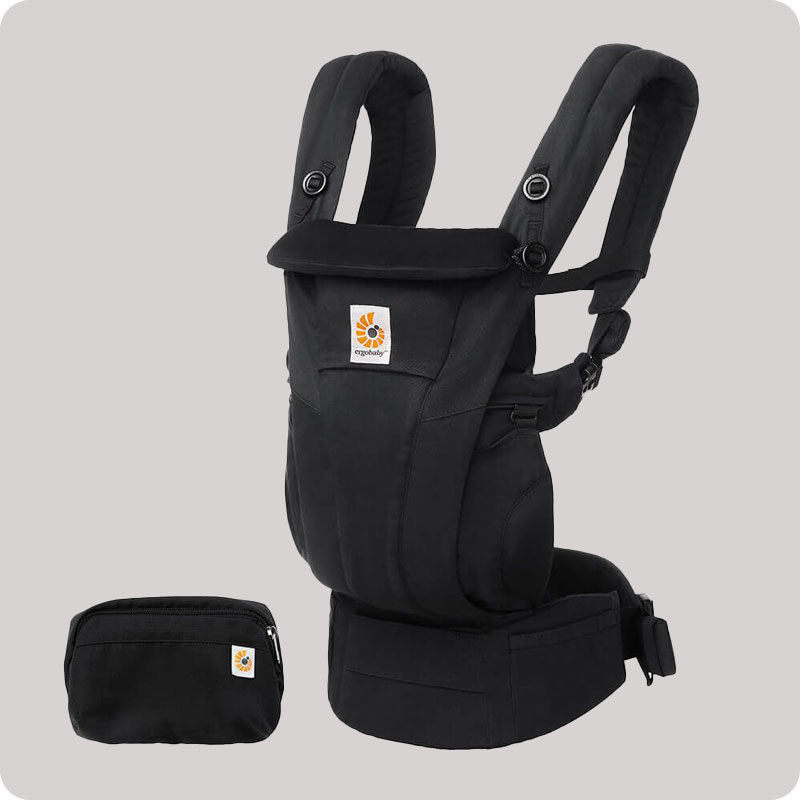
.jpg)
.jpg)
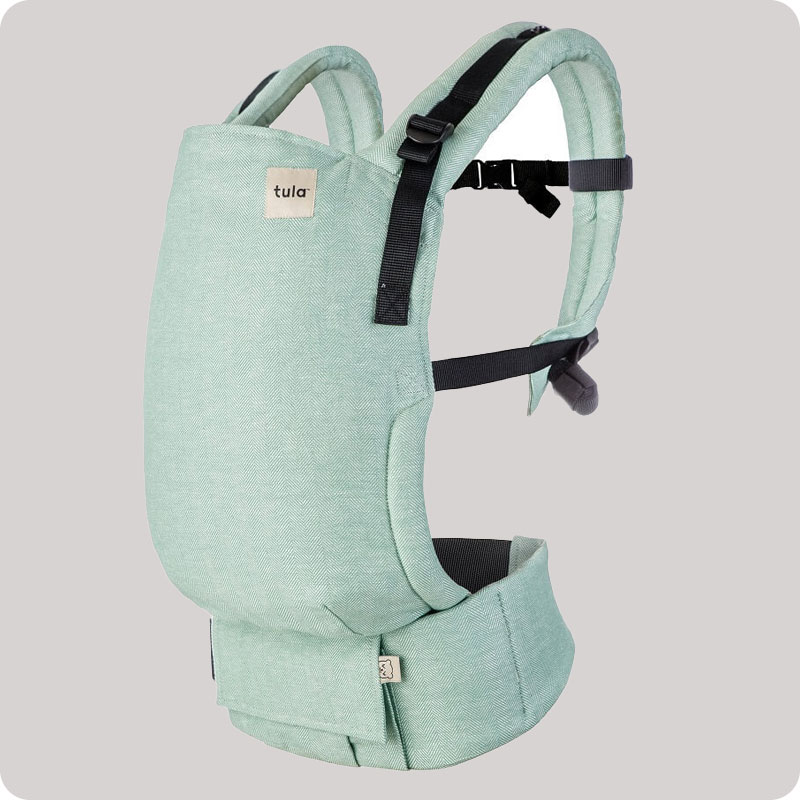
.jpg)
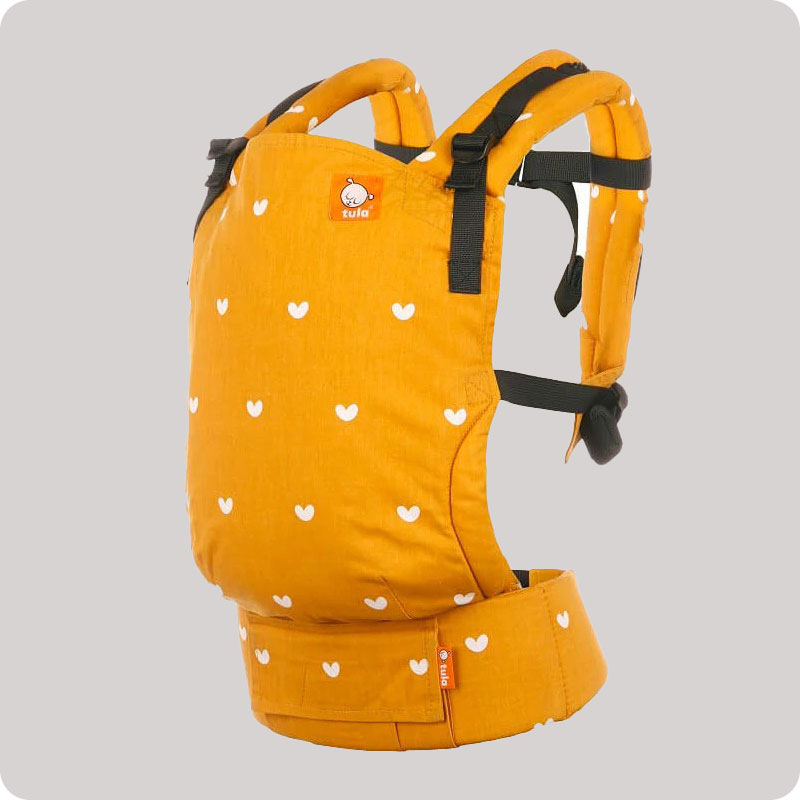
.jpg)
.jpg)
